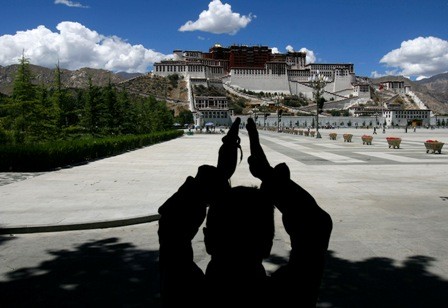Over 600,000 residents in the autonomous region of Tibet have access to solar power, according to reports by the local government.
As solar power plants and solar power facilities are starting to become more commonplace, the Tibet science and technology department said that the Chinese government has shelled out over 4 billion yuan ($644 million) to upgrade solar power capacity in the southwestern region to 200 megawatts.
For five years now, the Xigaze and Yangbajain photovoltaic plants have provided power for solar water heaters and some 400,000 solar cookers.
Solar cookers in particular have made life more convenient for locals, as Ngawang Ouco attests. "The solar cookers have saved the trouble of burning yak dung, and now we can use electric blenders to make buttered tea," said Ouco, whose village in Comai County has acquired photovoltaic facilities last year.
Furthermore, the region has many solar-powered phone base stations operated by China Mobile, as 79 percent of the firm's 1,000 base stations in Tibet are powered by solar energy.
China has been exerting efforts to give focus on clean energy.
In 2014, solar power capacity reached 28.05 gigawatts and a plan is underway to further increase it to 100 gigawatts by the year 2020.
Maria van der Hoeven, executive director of the International Energy Agency (IEA), in a BBC interview, explained that credit should be given to China for its efforts to provide clean electricity throughout the country.
According to statistics from IEA, the country has spent about $80 billion on renewable energy last year, rivaling the expenditure of the U.S. and the European Union of $34 billion and $46 billion, respectively.



























